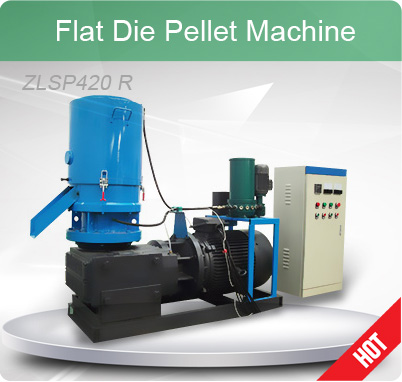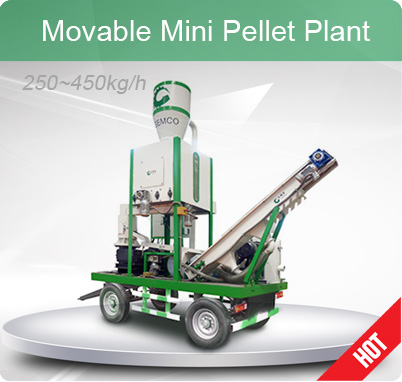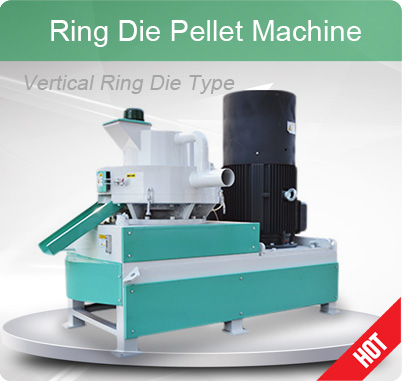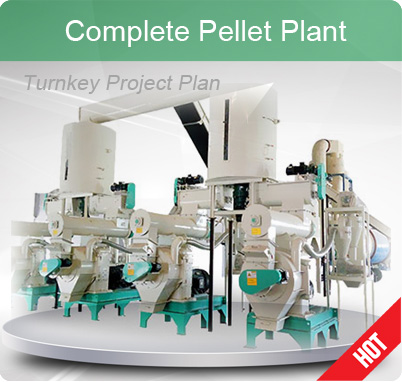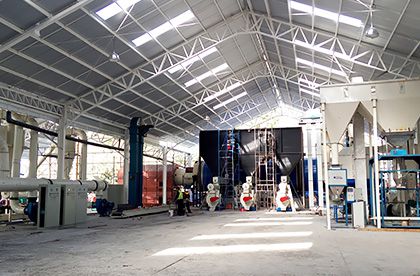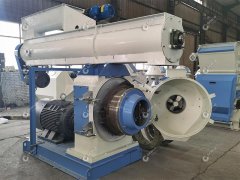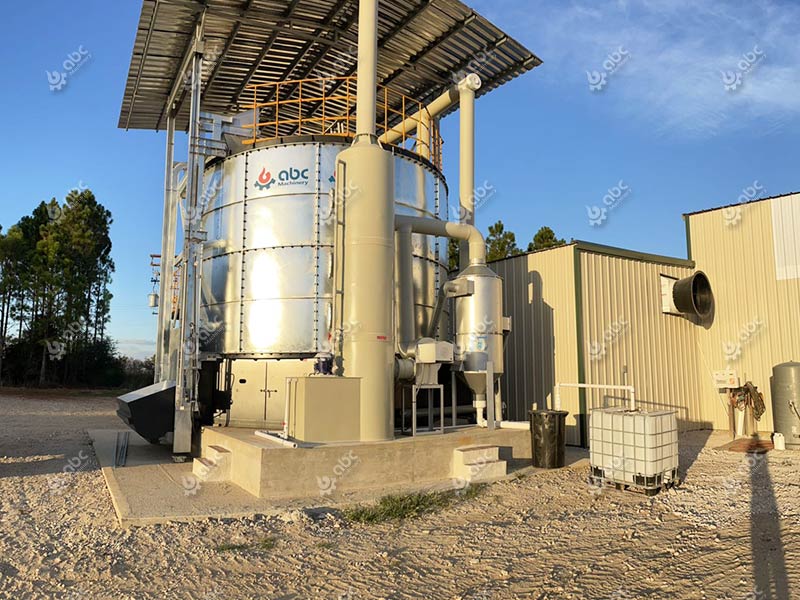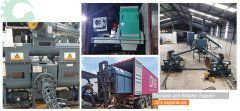Pelletizing Process: Advanced Animal Feed Pelleting Machines and Techniques
The pelletizing process is a key technology in the field of animal processing. The animal feed pelletizing meaning in this complex process is not only to improve animal feed mill productivity, but also to optimize the effectiveness of animal feed. Through a clever combination of ingredients, making feed pellets not only improves the animal feed stability and shelf-life, but also ensures that the animals receive a complete and balanced nutrition. Next, we will explore efficient animal feed pellet making process and favorable animal feed pelletizing machines together.
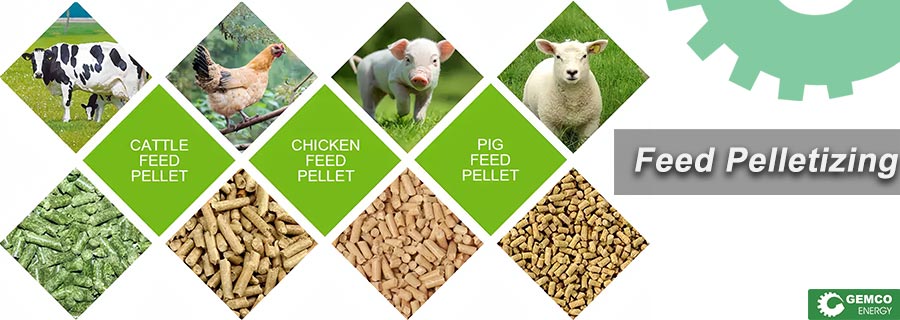
Manufacturing Machine Technology in Animal Feed Pelletizing Process
Classification of Animal pellet feed
- Expanded Pellet Feed: bulk density is less than 1 g/cm³. (bulk density: weight per unit volume of feed)
- Soft Pellet Feed: moisture content is about 20%~30%. Generally ready to use, can also be air-dried for use.
- Hard Pellet Feed: moisture content is generally less than 13%, and the capacity weight is 1.2~1.3 g/cm³.
Hard pellets are the largest production of pellet feed in the animal feed industry at present, widely used in many kinds of animals. Therefore, this article will also take hard pellets as an example to introduce the feed pellet processing process and the feed pellet machine purchase for animal feed plant investors, animal feed pellet machinery buyers and farmers who want to DIY their own pellet feed.
Hard feed pellets, soft feed pellets, and expanded feed pellets have different processing techniques and processing machines. If you want to know more specific information, contact us directly! We are pleased to provide free and professional help.
Unveiling Animal Feed Pellet Specifications: Processing the Best Pellet Feed
The technical requirements of hard feed pellets mainly require the pellet products to meet two types of indicators: Sensory Indicators and Physical Indicators. Sensory indicators require that the high-quality feed pellets should be uniform in size, with a glossy surface and no cracks, and the structure should be tight and hard to the touch. Physical indicators are relatively more, which will be listed below.
- Animal Feed Pellet Diameter: 1~20mm
Due to different animal species, the production data can refer to the following table when producing animal pellet feed.
| Feed Animals | Feed Pellet Diameter (mm) |
|---|---|
| Shrimp, Juvenile Fish | <1.0~2.0 |
| Adult Fish | 3.0 |
| Fledgling | 2.5 |
| Adult Chickens, Chicks | 3.0~4.0 |
| Adult Broilers, Breeders | 5.0 |
| Laying Hens | 3.0~5.0 |
| Laying Ducks | 6.0~8.0 |
| Rabbits, Sheep, Calves | 6.0~10.0 |
| Cattle, Pigs, Horses | 9.0~15.0 |
| Fattening Pigs | 4.0~10.0 |
- Animal Feed Pellet Length: 1.5 ~ 2 Times Diameter
The length of the pellet feed is usually 1.5 to 2 times the diameter. In the chicken feed production line, the length of the chick feed should be strictly controlled, too long will jam the throat and lead to choking. General chick feed and openings for aquatic animals are first processed into larger pellet feed and then crushed by pellet crusher machines to make crushed feed.
- Animal Feed Pellet Moisture Content: Not Exceeding 13.5%
In hot and humid environments, animal feed mills are going to need to use cooler machines to make the moisture content of pellet feed ≤ 12.5%. The moisture content of pelleted feed stored for a long time should be lower. Usually, the moisture content of pellet feed produced by animal feed pellet mills is ≤13.5%.
- Animal Feed Pellet Optimal Bulk Density: 1.2 ~ 1.3 g/cm²
The higher the capacity of animal feed pellets, the more they can withstand the impact of the packaging and transportation process without breaking, and the less powder they produce. However, the density is too large to make the output of the animal feed pelleting machinery decrease, increasing animal feed plant cost, and making the animal chewing laborious. Usually, the feed pellet capacity is 1.2~1.3g/cm³. Specific data vary according to the type of animal feed pellet press machines or the type of raw material being pressed.
- Animal Feed Pellet Finished Yield: Not Less Than 95%
The ratio of the weight of the pellet feed to the weight of the meal entering the pelletizer is generally required to be not less than 95%. Too low a ratio indicates a greater loss of raw material during feed processing, which will increase feed mill costs.
- Animal Feed Pellet Water Resistance: Maximum Duration of 3 hours or more
Shrimp and crab bait are required to be immersed in water for more than 3h without dissolving, and fish feed is required to be immersed in water for 0.5~2h without dissolving.
If you still have questions or want to know more about the perfect animal feed pellets, click below for a free consultation with us!
Success with Animal Feed Pelletizing Machines and the Feed Pelleting Process
Feed Pelletizing Process is also called the feed pellet formation process. The pelleting definition is that a single powdered ingredient or mixed powdered feed is compacted and extruded through the pellet die holes of an animal feed pelletizer to make a pelletized feed. Animal Feed pellet machine as a feed pelleting process practitioner and pelletizing task bearer, feed manufacturers must be careful when purchasing. (Link to Other Processing Processes and Machines in Animal Feed Manufacturing Plants>>)

Complete Animal Feed Mill Process Flow Chart
At present, in the field of animal feed processing, the most used animal feed pelleting machines in animal feed mills are flat die pellet machines and ring die pellet machines. These two types of animal pellet feed machines can meet the needs of feed producers for different feed production scales, budgets, and pellet quality. I will discuss each of them next.
Flat Die Feed Pellet Mill for Sale
Flat Die Feed Pelletizer Working Principle: Based on the flat die pelletizing technology, the well-mixed feed raw materials are fed into the machine. In the animal feed pellet making machine, the raw materials undergo extrusion, shearing and friction to form pellets under the extrusion of the rollers. The size and shape of the pellets are adjusted by the design of the pellet mold holes. Finally, cut the feed pellets with the specifications required by the feed mill.
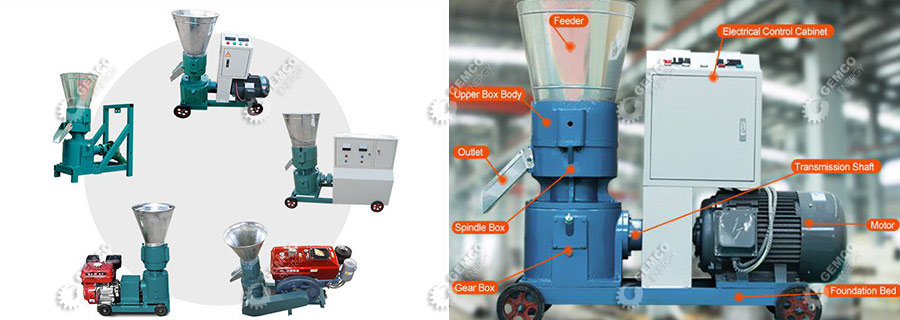
Flat Die Pellet Mill for Sale
- Flat Die Feed Pellet Processing Machine Applications: The flat die pellet maker machine structure is relatively simple, often used as a small feed machine in small feed mill plants and as a farmers' feed mill in farms. Flat die feed pellet maker machine has lower production efficiency, but flat die feed mill cost is relatively low and operation is simple, also very suitable for DIY feed pellets as a homemade feed pellet machine.
- Different Flat Die Pellet Mill Power Sources: To meet different production environments, energy availability, production requirements and the characteristics of feed pellet processing, the flat die pellet maker can use a variety of different power sources to drive its operation, including electric power, diesel fuel, gasoline, PTO.
Ring Die Feed Pellet Mill for Sale
Ring Die Feed Pelletizer Working Principle: Based on the ring die pelletizing technology, the material is fed into the machine and is extruded and sheared by the hole of the ring die with a high temperature and high pressure. Under the action of the cutter, feed pellets of the required size are made. This process ensures the uniformity and stability of the feed pellets, which is favorable to the digestion and absorption of the animals.
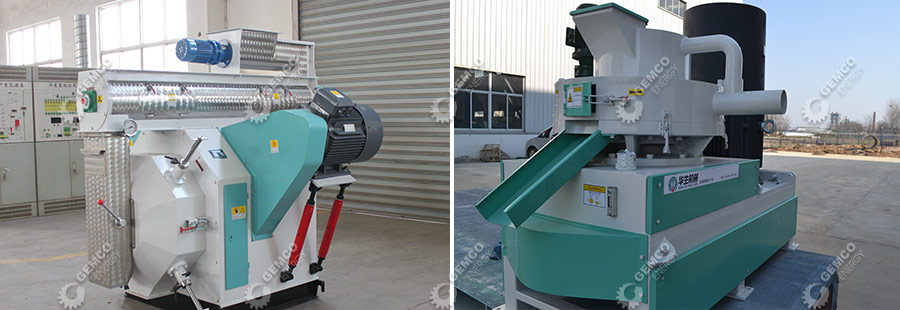
Horizontal Ring Die Pellet Machine for Sale & Vertical Ring Die Pellet Mill for Sale
- Ring Die Feed Pellet Maker Application: The ring die feed pellet making machine has a complex structure and is suitable for producing high-precision and high-quality feed pellets. As a large feed pellet machinery commonly used in large feed pellet production plants or industrial animal feed production plants. It usually has higher production efficiency but a higher investing price.
- Ring Die Feed Pellet Manufacturing Machine Classification: The ring die pellet production machine is divided into vertical ring die pellet mill and horizontal ring die pellet mill. Vertical ring die pelletizing machine models are characterized by vertical structure, small footprint, and easy maintenance. Horizontal ring die processing machine models are characterized by horizontal placement, simple operation, and wide application. Therefore, when choosing a ring die pellet machine, you need to consider the animal feed pellet manufacturing plant production requirements and space constraints.
Differences Between Flat Die Feed Pellet Machine and Ring Die Feed Pellet Machine
| Feature | Flat Die Feed Pellet Mill | Ring Die Feed Pellet Mill |
|---|---|---|
| Structure | Flat die structure | Ring die structure |
| Power Consumption | Lower power consumption | Higher power consumption |
| Feed Pellet Machine Price | ≥$490 Relatively lower | $15,600 Relatively higher |
| Applicability | Suitable for small feed plant | Suitable for large feed plant, industrial feed production |
GEMCO: Crafting Quality Animal Feed Pelleting Machinery for Your Success
When it comes to choosing animal feed pellet processing machines and production lines, I am confident that GEMCO will be your ideal choice. Our company's animal feed manufacturing machines are known for excellent performance, reliable quality and favorable prices. For nearly 30 years, our team has been providing efficient and intelligent animal feed production solutions and comprehensive services to customers from Australia Canada, Chile, Uganda, Indonesia, Saudi Arabia, Nigeria, Peru, and many other countries. Get in touch with us! Looking forward to working with you for a bright future!


